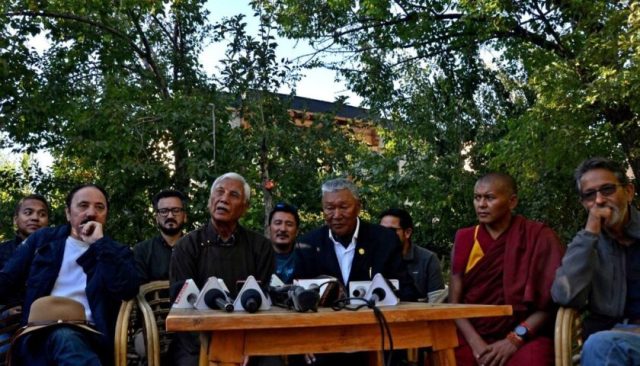Aurora in Ladakh validate India’s space weather tracking efforts
Ladakh’s recent sightings of aurora, marked by reddish or greenish light in the night sky and usually observed in the far northern regions, is a validation of our efforts in space weather monitoring, a team of astrophysicists that predicted the activity about 48-72 hours prior said.
The appearance of intense red-coloured light rays in the sky on the intervening night of October 10-11 was the latest in a series of recent auroral sightings — previous ones occurred on those of May 11 this year, and November 5 and May 10 of 2023.
All-sky cameras of the Bengaluru-based Indian Institute of Astrophysics (IIA) at Hanle and Merak in Ladakh captured the aurorae throughout the night.
Dibyendu Nandi, head of the Center of Excellence in Space Sciences India (CESSI) at the Indian Institutes of Science Education and Research (IISER) Kolkata, said, “The aurora sightings are a validation that we are on the right track. It boosts our confidence to predict extreme weather events in space that can potentially endanger all kinds of satellite-based services on Earth, bringing modern society to a standstill.” Space agencies and organisations such as National Oceanic and Atmospheric Administration (NOAA), US, monitor space weather to provide timely information of disruptions from the Sun, that can possibly cause communication blackouts and satellite outages.
Also Read | Diwali Delights Await You in Kashmir—Book Your Dream Escape!
While aurorae are known for their scenic beauty, their occurrence in lower-latitude regions like Ladakh is an indication of heightened solar activity in the form of solar storms known as coronal mass ejections, or CMEs, Nandi said. Solar storms periodically occur as the Sun’s internal dynamo process — that creates its magnectic field — intensifies and weakens. This cycle of solar activity typically lasts 11 years. In 2018, CESSI team, which included Nandi as a member, predicted that the current solar activity cycle would peak in 2024, a finding published in the journal Nature Communications.
“However, we continue to track solar activity to determine if the current cycle has indeed peaked,” Nandi said.
An aurora occurs when charged particles from the Sun interact with the Earth’s magnetosphere or magnetic field, which acts as a shield against harmful solar and cosmic rays. These particles pierce through the shield, triggering aurorae. The phenomenon is most commonly seen in the far northern regions of Canada, Norway, Sweden, Finland, Alaska and Russia, and all of Iceland and Greenland.
The astrophysicist explained that a ‘severe’ solar storm is capable of triggering aurorae and enhancing orbital decay of satellites, while an ‘extreme’ one is capable of “killing satellites, tripping power grids and causing large-scale communication blackouts”.
Also Read | Unveil the Beauty of Kashmir’s Autumn: The Perfect Time for Adventure and Serenity
Nandi said that the aurora sightings “herald the peak of the current solar cycle”. However, whether or not the current cycle has peaked will need to be watched out for. This would possibly be marked by less frequent solar storms and aurorae over the years when the Sun’s activity starts declining, he added.
Follow us on whatapp
Get real-time news delivered straight to your WhatsApp! Join our channel for Breaking News , In-depth Analysis , and a curated feed of the most important stories from Kashmir and the world.




